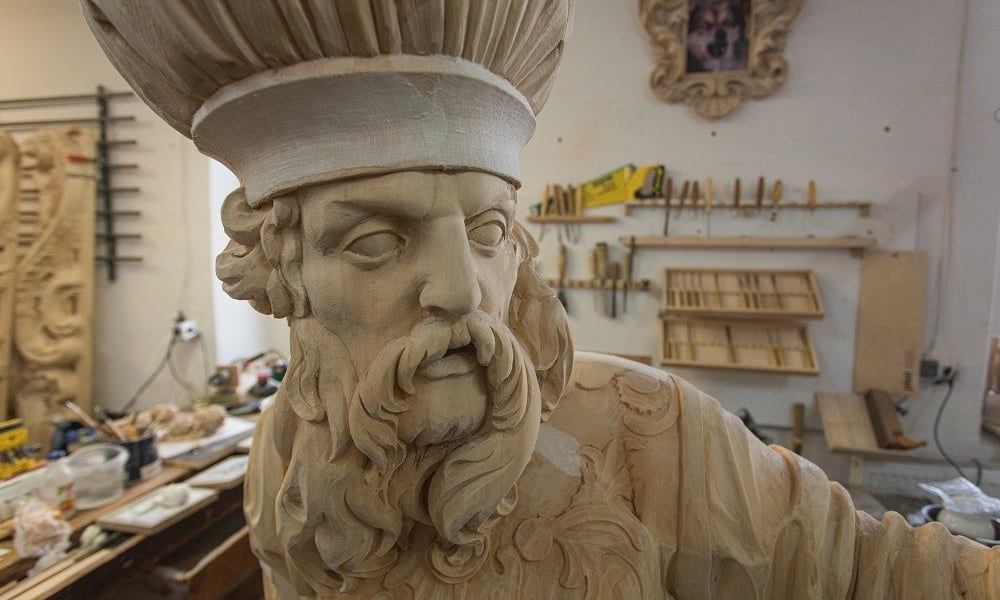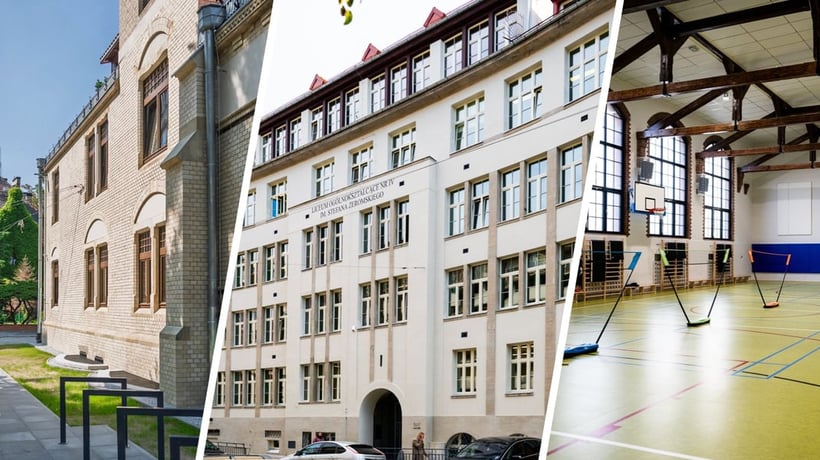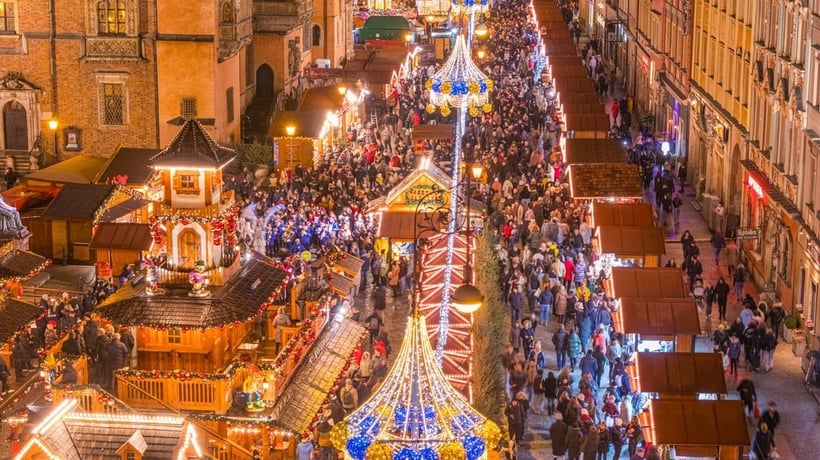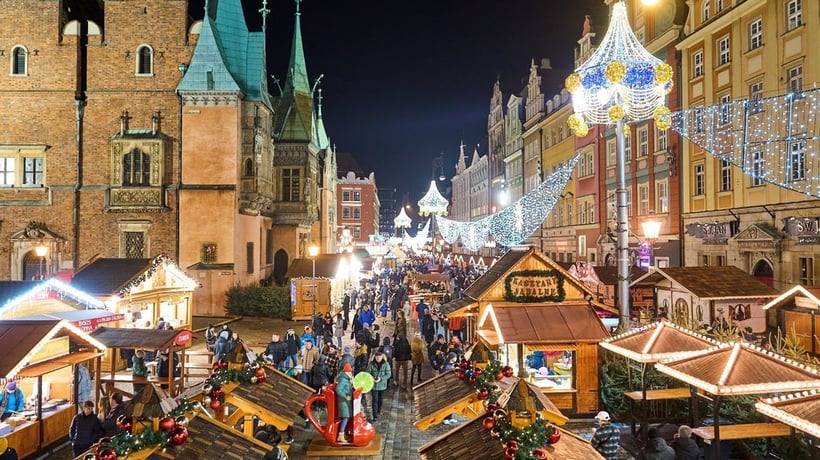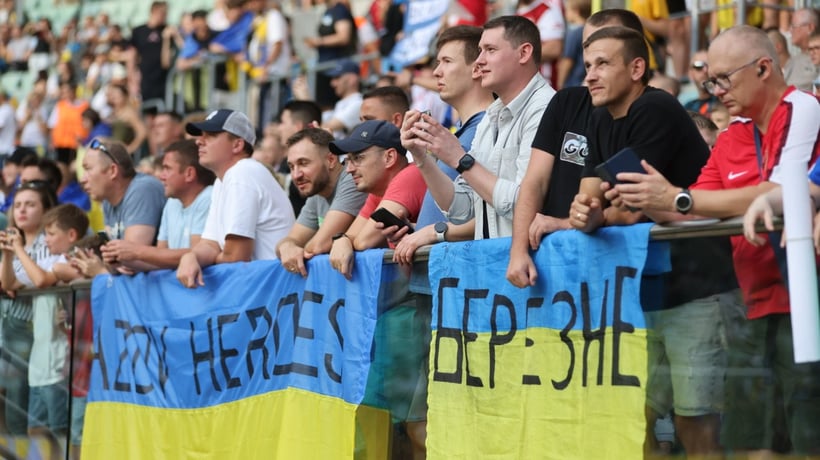The 18th-century pipe organ built by Michael Engler was the richest instrument of Silesia at that time, both in respect of musical value and appearance. On the day of the fire, it occupied the area of 115 sq. m. of the rear nave of the basilica. Its span was 9.6 m, its depth – 15 m, and its height (including architectural elements) – 16.6 m. The entire structure was suspended 11 m above the floor. The gilded polychromatic organ front was adorned with huge wooden figures and hundreds of carved details. The pipe organ burnt down completely in 1976; only six fragments of burnt sculptures remained. The loss of this spectacular instrument was an immense blow for Wroclaw.
Efforts aimed at reconstructing the pipe organ lasted many years. The basilica was renovated, and the gallery was reconstructed. But the place after the pipe organ still remained empty... In 2018, a consortium of companies was established in order to rebuild the instrument. The idea of the consortium’s co-ordinator and plenipotentiary Andrzej Lech Kriese was to retain the “Wroclaw” character of the instrument. Therefore, Wroclaw was chosen as the location of the workshop where graduates of the Wroclaw Academy of Fine Arts and from other Polish and foreign artistic circles work on the reconstruction of sculptures and details.
At the beginning, after months of research, a three-dimensional model was prepared in a scale of 1:10. Its construction helped to determine the real size of the 18th-century original. This was not easy because proportions of figures had been specific. Their heads, torsos and headgears had been elongated – they had been specially designed to seem proportional when seen from the bottom. The model was built with the use of a traditional woodworking technique; its construction involved also artistic techniques, but some technological innovations (e.g., 3D printouts) were included as well.
The spectacular organ front had a very rich ornamentation consisting of various figures: angels, personifications of virtues or characters from the Old and New Testament, which served as a framework for the instrument itself. The researchers even managed to find out what instruments had been used by the angel orchestra – these attributes could not be found in the photo documentation, because they had been lost. The pipe organ was probably damaged during the military actions of Napoleon’s troops; the instruments were removed and never returned to their original place. These figures and adornments are under production in the Wroclaw workshop. There are 500 different elements to be made, including 150 ornaments and figures, decorations and eight large sculptures (up to several metres in size). They are reconstructed first in the model material (smaller elements in plasticine, large elements in clay on a steel structure); then, on that basis, moulds are created and plaster casts are formed in them. Some of these plaster prototypes have been placed in buildings of the Wroclaw City Office so that everyone could see the result of artists’ work and the scale of the project.
The next process is the reproduction of sculptures in wood. They are made of basswood, which is particularly soft, but also very durable. This kind of wood was used by Veit Stoss for building his famous altar in St. Mary’s Basilica in Kraków. The sculptures are made of blocks glued from a few smaller trunks, thereby being particularly resistant to the temperature and humidity of the basilica. This process is in progress. After multiple priming works, the sculptures will be ready for gilding. In the organ front, over 400 elements will be covered with a layer of 24-carat gold. Such a number of gildings on the original instrument testified to the enormous generosity of its founders.
Another problem was the lack of any data about the colour scheme of the organ front. After the arduous search, on the basis of analyses and comparisons with pipe organs from the same period that has survived and with pipe organs from Evangelical churches, it was determined that the colour scheme had been related to the Reformation program, because the basilica had been a Lutheran cathedral in the 18th century. After the confirmation of this discovery in other sources, it was decided that the polychrome would have bright colours in cream, beige, azure and white shades.
The reconstruction of Engler’s work is said to be the biggest restoration of a pipe organ in the world after World War II. Works in the Wroclaw workshop are under way – for the time being, one fourth of 500 elements is ready. The cartouche located in the axis of the organ is currently under reconstruction. According to the tradition, it must have belonged to important sponsors of the instrument. It was completely illegible, but the researchers managed to find out that it had belonged to the von Rimmer und Rimberg family, which had been the main sponsor, and its ultimate shape was restored. The shield has four fields; two fields in blue contain figures of Phoenix holding a laurel branch in its right claw, and two other fields in red present an image of the claw itself lifting the branch. A model of a halo with stained glass filling the triangular frame is being created, too. It presents a tetragram – four Hebrew letters standing for the name of God of Israel.
The whole project is very ambitious, but the reconstruction of the instrument is an investment in the restoration of the heritage of past centuries to Polish culture. Each of its stages is labour- and time-consuming.
July / August 2020
- the oak base of the instrument will be laid, on which the structure of the pipe organ will be built from September (the time between these stages is set aside for the acclimatisation of wood to the conditions inside the temple)
The great inauguration of the pipe organ will take place in the autumn of 2021.
The consortium consists of three companies:
Orgelbau Klais – Philipp Klais – consortium leader
It is responsible for elements of the air supply system (air-ducts, bellows, conduits), pipes, tracker elements (a system of moving between keys and control valves letting in compressed air into the pipes) and toning the organ (a set of operations aimed at setting the specific sound and type of blow of a pipe).
Manufacture d’Orgues Thomas
It is responsible for reconstructing the windchest – the most important part of the air mechanism of the organ. It is the place on which all pipes of the instrument supplied with the air accumulated in the windchest are situated. It is also responsible for toning the organ.
Zych Zakłady Organowe
It is responsible for building the load-bearing structure and the windtrunk.
phot. Janusz Krzeszowski, Grzegorz Rajter
